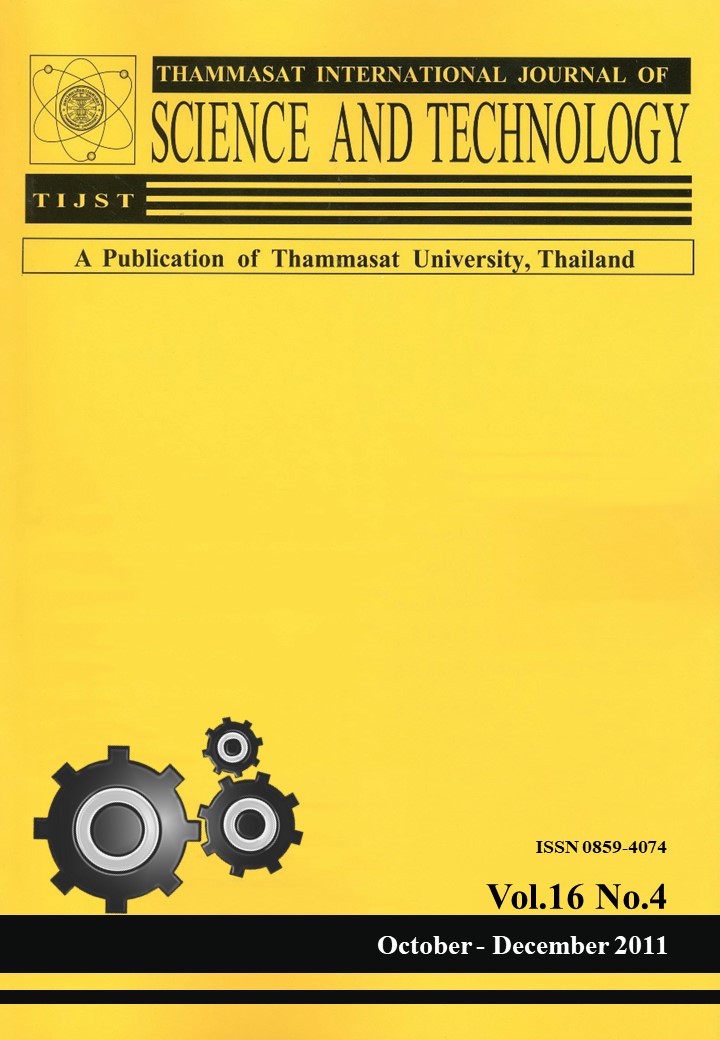A Study of the Solar Chimney for Heat Protection in a Hot and Humid Climate
Keywords:
Solar chimney, Natural convection, Stack ventilation, Coefficient of discharge, High mass buildingsAbstract
This study aims to experimentally investigate a solar chimney that integrates the cool air above the moist earth with the warm air in the chimney to enhance heat protection of a building. The exterior surface of a testing chimney exposed to the simulated moderate and high solar intensity of 10-700 W/m2 and 80-980 W/m2 gives a surface temperature of 30.2-63.2°C. Cool air of 26.0-27.8°C entering the high mass solar chimney reduces the surface temperature of the internal wall by 2.1-16.9°C with delay time of 1-3 hours compared to the exterior wall’s temperature. The air temperature at the outflow is higher than that of the inflow by 10°C at 6:00 p.m. , corresponding to the highest air ventilation rate. With similar values of air temperature in the chimney, the surface temperatures with moving air are found to be less than that of the computed stationary air by 8.5-8.9°C during the nighttime. Therefore, the proposed solar chimney performs as an active insulator for both daytime and nighttime. The coefficient of discharge of 0.42-0.67 are derived from the relationships between the values of air velocity and the outflow-inflow temperature differences.
Keywords: Solar chimney, Natural convection, Stack ventilation, Coefficient of discharge, High mass buildings








